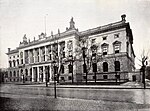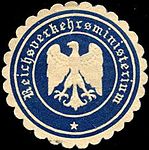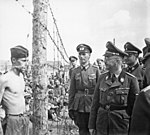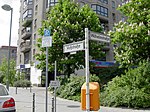German Bundesrat

The German Bundesrat (lit. Federal Council; pronounced [ˈbʊndəsʁaːt]) is a legislative body that represents the sixteen Länder (federated states) of Germany at the federal level (German: Bundesebene). The Bundesrat meets at the former Prussian House of Lords in Berlin. Its second seat is located in the former West German capital of Bonn. The Bundesrat participates in legislation, alongside the Bundestag consisting of directly elected representatives of the German people. Laws that affect state powers, and all constitutional changes, need the consent of both houses. For its somewhat similar function, the Bundesrat is sometimes (controversially) described as an upper house of parliament along the lines of the United States Senate, the Canadian Senate, and the British House of Lords.Bundesrat was the name of similar bodies in the North German Confederation (1867) and the German Empire (1871). Its predecessor in the Weimar Republic (1919–1933) was the Reichsrat. The political makeup of the Bundesrat is affected by changes in power in the states of Germany, and thus by elections in each state. Each state delegation in the Bundesrat is essentially a representation of the state government and reflects the political makeup of the ruling majority or plurality of each state legislature (including coalitions). Thus the Bundesrat is a continuous body and has no legislative periods. For organizational reasons, the Bundesrat structures its legislative calendar in years of business (Geschäftsjahre), beginning each year on 1 November. Each year of business is congruous with the one-year-term of the presidium. The sessions have been counted continuously since the first session on 7 September 1949. The Bundesrat's 1000th session, which was opened by a speech held by President of Germany Frank-Walter Steinmeier, took place on 12 February 2021.
Excerpt from the Wikipedia article German Bundesrat (License: CC BY-SA 3.0, Authors, Images).German Bundesrat
Leipziger Straße, Berlin Mitte
Geographical coordinates (GPS) Address Phone number Website Nearby Places Show on map
Geographical coordinates (GPS)
| Latitude | Longitude |
|---|---|
| N 52.509166666667 ° | E 13.381388888889 ° |
Address
Bundesrat
Leipziger Straße 3-4
10117 Berlin, Mitte
Germany
Open on Google Maps










